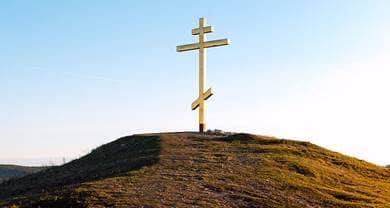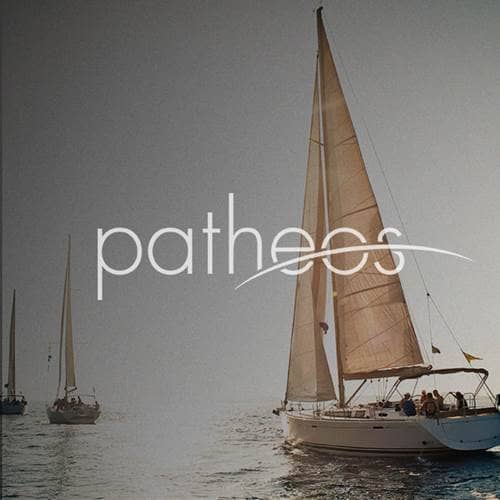- Trending:
- Forgiveness
- |
- Resurrection
- |
- Joy
- |
- Feminism
- |
- Afterlife

RELIGION LIBRARY
Eastern Orthodoxy
Symbolism
The most distinctive sign or symbol of Eastern Orthodoxy is the icon. Icon is a Greek word meaning image, and in Christianity, icons are sacred images. They can be images of Christ, Mary, the apostles, the saints, angels, prophets, and other significant personalities from Christian stories and history. Or they can be images of stories taken from the Bible and Christian history. Eastern Orthodoxy does not tend to use statues. The icons are created in mosaics, frescoes, engravings, paintings, or prints. The technique is not representational, that is, the style of drawing does not imitate real life. Instead, icons are created using a specific style that is instantly recognizable by their religious subject matter and two-dimensionality. Although icons are painted on church walls and windows, and on the inside of the dome, many icons are portable, made of paint, mosaic, carving, engraving, embroidery, weaving, and other methods. Portable icons are very popular, and decorate homes, offices, shops, and even taxis.
Icons are so important to Eastern Orthodox Christianity that it can be difficult to fully understand the tradition without an understanding of icons. In Eastern Orthodox belief, icons are windows that open into eternity. The image of a saint, for example, signifies the presence of that saint. The icon mediates between the human world and heaven. When an Orthodox Christian kneels before an icon and prays, the saint in the image is right there with the Christian, hearing his or her prayers and conveying from God supernatural powers of healing or other aid. When the congregation gathers in the church for prayers and the Divine Liturgy, the giant icon of Christ Pantocrator painted on the inside of the dome assures the faithful that Christ himself presides over the service. The icons of Mary, the angels, and the other saints signify that the entire company of heaven is present for the service.
This idea of the icon extends to all of physical creation. In the first chapters of the Book of Genesis, the Bible says that humans were made in the image of God. Orthodox Christians interpret that to mean that every human being is an icon of God, infinitely precious in God's sight. The church building, carefully built so that every single aspect of the design is symbolic, is an icon of the Kingdom of God. In the light of the belief in the Incarnation, in which God became a physical human, Orthodoxy believes in the ultimate redemption of the cosmos in which all of creation, physical as well as spiritual, is deified by God's presence. The icons are conduits of redemption.
Study Questions:
1. What are icons? What do they depict?
2. How do icons serve as relics?
3. How do icons foster redemption?










